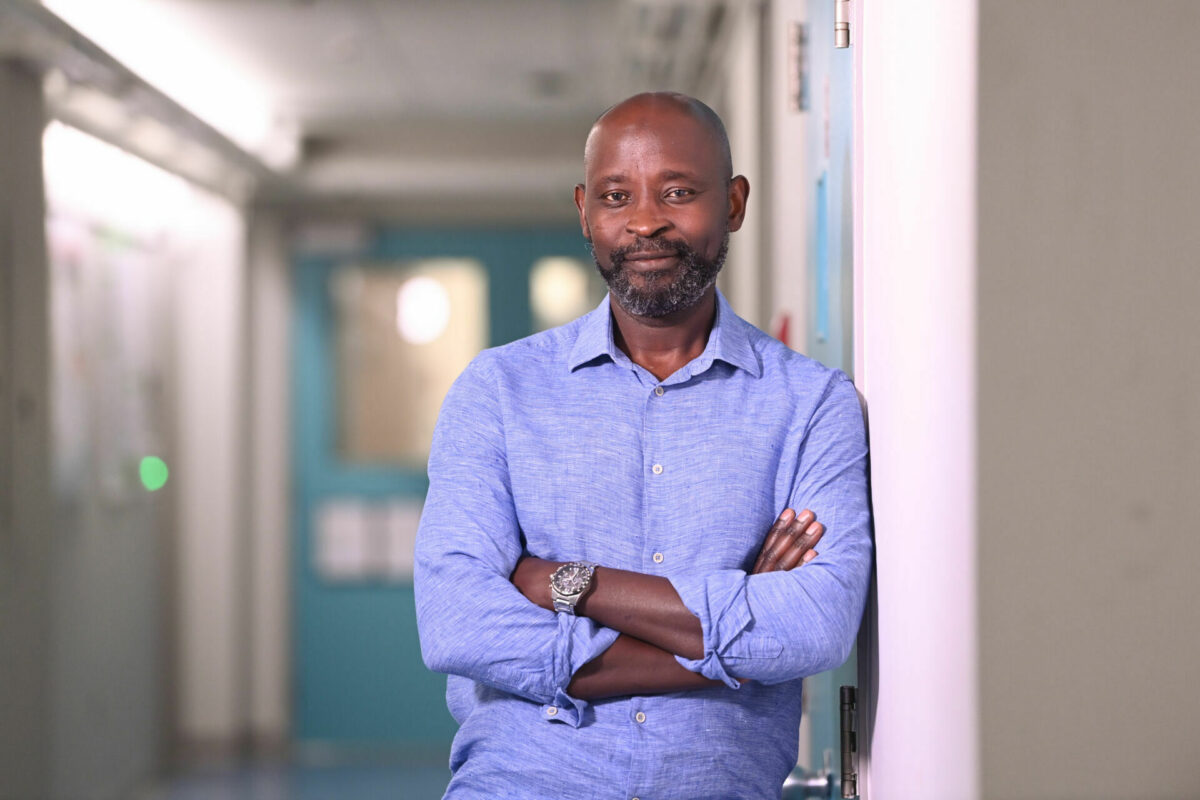Making his Mark: Dal researcher develops biomarker for common childhood kidney cancer
September 26, 2024
By Laura Eggertson
Canon Beazley had already finished his treatment, following surgery and 10 months of chemotherapy for a childhood kidney cancer called Wilm’s tumor, when the then-12-year-old’s panic attacks began.
The first time, he was in the dressing room at a hockey tournament. He started sweating, his heart raced, and he felt shaky.
“It was pretty much a year to the date of the first investigations of the stomach pain,” remembers Canon’s mother, Shelly Malcolm Beazley.
When the panic attacks continued, the Beazleys realized Canon was experiencing Post-Traumatic Stress Disorder (PTSD). The anxiety-related disorder, coupled with inflammatory bowel issues, are among the long-term complications that can result from the traumatic and aggressive treatments children with Wilm’s tumor often undergo.
Those long-term effects are the reason Dr. Tobias Karakach is investigating a way to personalize the treatment for children with Wilm’s tumors.
Dr. Karakach, an assistant professor in Pharmacology at Dalhousie’s Faculty of Medicine, uses computer models to identify patterns in data from a large set of Wilm’s tumor samples.
Identified Gene
His analysis has now identified a gene which, when mutated in a Wilm’s tumor, makes it more likely this childhood cancer will recur.
Now, Dr. Karakach’s goal is to validate this potential biomarker, so doctors could use it to distinguish hard-to-treat tumors that require aggressive treatment, from tumors that are unlikely to recur.
“Every patient would have to have their tumors (genetically) screened,” Dr. Karakach says.
Then, if gene sequencing identified the mutated gene, those children would need what he calls the “sledgehammer” approach to treatment: surgical removal of their kidney followed by the most powerful chemotherapy available, to make sure the cancer would not recur.
Doctors could spare other children, whose tumors did not express the mutated gene, from the harshest forms of chemotherapy, or prescribe it for shorter periods of time, along with yearly gene sequencing.
“Our studies are showing that many of these cancers actually don’t need that kind of severe, very escalated treatment,” Dr. Karakach says.
Doctors could then follow those children closely, but could spare them the more lengthy and traumatic treatments – like those Canon experienced.
Because Wilm’s tumors normally occur in children even younger than Canon, once they are cancer-free they still have a lifetime of contact with the healthcare system to undergo, Dr. Karakach says. That’s because they deal with the effects of chemotherapy, including neurocognitive and mental health disorders, decreased kidney function, developmental disorders, and cardiovascular issues, as well as the social and educational issues that result from missed time at school and contact with friends.
Lasting Chemo Effects
“When you talk about children’s cancers, it leaves me heartbroken,” says Dr. Karakach, who imagines how aggressive chemotherapy would affect his own two children.
“There are lasting effects that people don’t think about.”
In addition to providing a road map for personalized treatment of patients with Wilm’s tumors, the gene Dr. Karakach has identified is also a potential target for a new drug or therapy to regulate it so the tumor does not recur. And the same gene, when mutated, may become a biomarker for other cancers as well.
Canon Beazley, now 14, was fortunate enough to be able to receive trauma-based cognitive behavioural therapy. The treatment has stopped his panic attacks and other PTSD symptoms, and led him to speak publicly about the challenges that follow cancer therapy and the benefits of counselling.
Canon’s mother is a fervent supporter of Dr. Karakach’s research, in hopes it will prevent other families from undergoing the aggressive chemotherapy journey Canon endured.
“I do believe with further research, maybe he wouldn’t have had to have chemo at all,” Shelly Malcolm Beazley says.
“If they can lessen the severity of the treatment and also add to your comfort level that when you are out of the woods, the cancer is not going to return—that’s huge. Because a huge part of the suffering is the follow up treatment, the chemotherapy, but also the anxiety of how likely this thing is to return or show up elsewhere.”
Philanthropic donations are critical to moving Dr. Karakach’s research into Wilm’s tumors forward. Although this is the most common type of childhood kidney cancer, it’s still rare, with only about 20 children diagnosed in Canada every year.
The rarity of the disease means large pharmaceutical companies are not eager to invest in research on Wilm’s because there are not enough potential recipients of any drug or screening tool they develop to
recoup their investment, Karakach says.
“Donor money is very important,” he says.
Philanthropic support is also critical from Shelly Malcolm Beazley’s perspective, if it enables Dr. Karakach to deliver this critical biomarker that can save children and families from additional suffering.
“Anything that can inform treatment and decrease the severity of chemotherapy is priceless,” she says.


